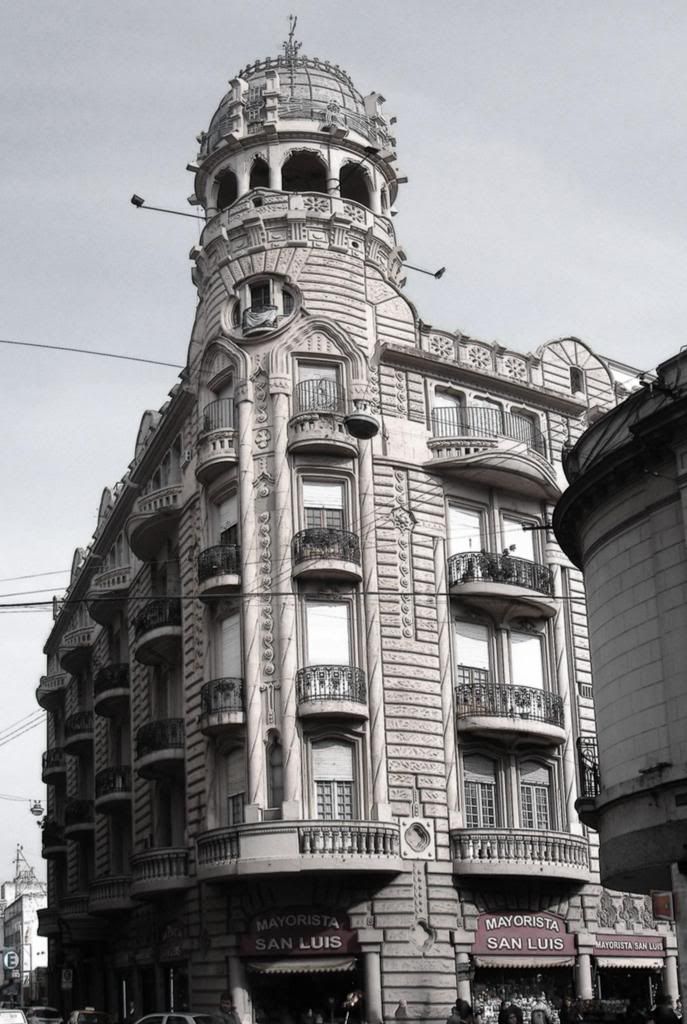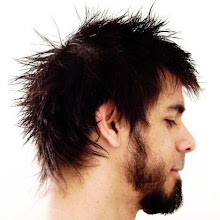I've been doing some experiments with pseudo-panoramic images and with filters. When I say "pseudo-panoramic" it's because they're not really taken with a wide-angle camera or any sort of special equipment, but assembled by software from a set of overlapping pictures. You just stand in the middle of the scenario you've chosen and take three, four, or a dozen pictures — take one, rotate a few degrees on your axis, take another, etc. Then you dump them on your PC, load them in AutoStitch, and wait for the pattern-matching software to do its thing.
If your camera doesn't have a manual setting, the software will probably have trouble matching the different (automatically adjusted) exposures. If left in automatic (or if there's no alternative), the camera will try to get a picture with a fixed total amount of light. If you have the sun in your picture, most of the light will be there... and the rest of the picture will be too dark. The software cannot match pictures where this light-dark balance is wildly different. There won't be any problem, though, if you just take a view of something far away, ideally with the sun behind you (or not more than 45 degrees to the right or left of the direction directly behind you).
For filters I use The Gimp, an open source program that was originally designed for Linux (the earlier version employed native GTK+ widgets, which looked —and behaved— quite odd in Windows). I've never tried Photoshop, for one reason or another, though mainly because I don't really like to fool around with filters that much, and The Gimp has plenty of them for me as it is.
You've seen some of my panoramas here, in Flickr and in Vista Rosario. I haven't posted many retouched pictures anywhere, though, except for some basic clipping, fine-tuned rotation and quick contrast/brightness fixes. However, you can do interesting effects with filters — and I mean interesting, not just funny or "cool". For example, I passed by the Palacio Cabanellas yesterday, on my way to buying a bolso matero (a cross of backpack and purse to carry a mate gear — the gourd itself, a thermos for hot water, and a plastic container for yerba mate). I had some less-than-satisfactory pictures of it... bad lighting, bad time, not the right sunlight angle to bring out the details, ugly cloudy sky... The light looked perfect this time, though, so I defied the nightmare of rush hour in the place with the narrowest sidewalks of the world, and grabbed a set of pictures, including five destined to make up a panorama. Back home I assembled them. The spherical projection made the vault look like a hot air ballon on top of a golf tee, but The Gimp's Perspective tool took care of that. I added a "Detect borders" filters, played with the colour curves, threw in a bump map, and voilà. The result looks retouched but not too much — maybe like something out of an old newspaper, or a very detailed sketch — and the building sticks out from its (depressing) surroundings.
This is a picture you won't get with a common camera; there's simply no room in Rosario downtown to back away and take nice wide shots of tall buildings. And sadly, no amount of photo-tinkering or physical prowess will rid your pictures of aerial wires...
04 July 2007
Photo manipulation
at
8:46 AM
![]()
Labels: autostitch, graphic software, palacio cabanellas, panoramas, photography, pictures, rosario, the gimp
Subscribe to:
Post Comments (Atom)













No comments:
Post a Comment
Note: Only a member of this blog may post a comment.